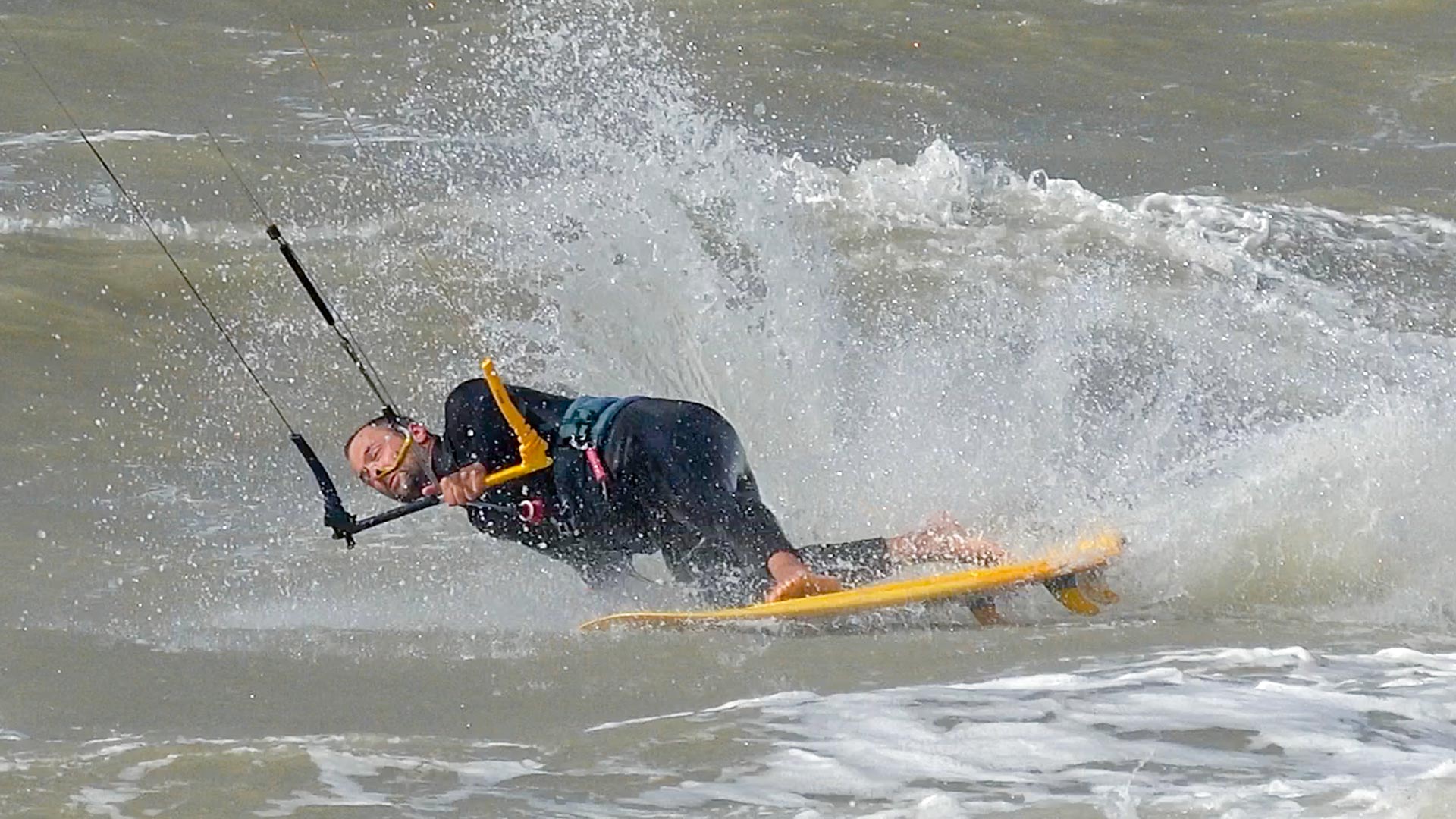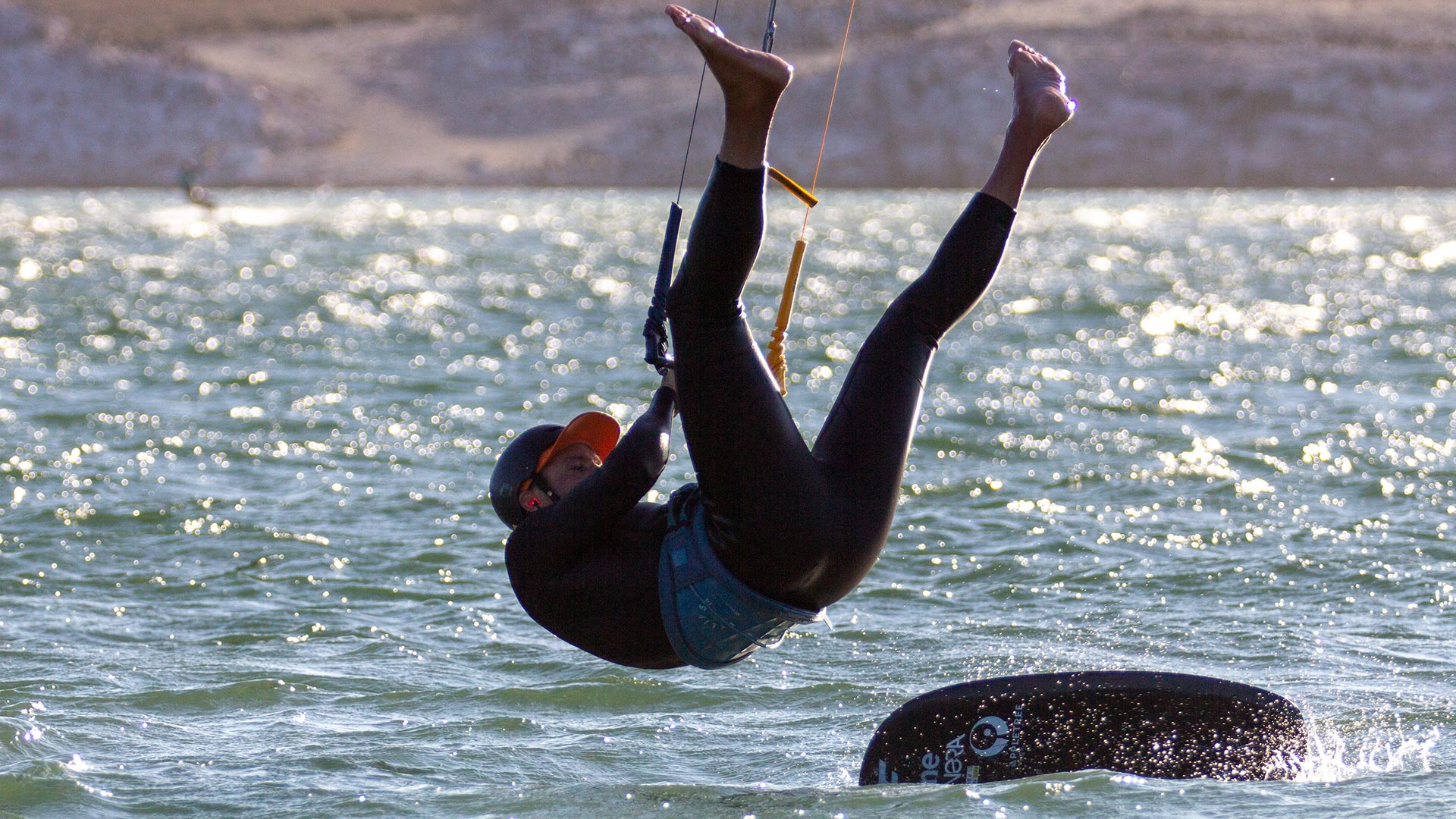I love to crash.
Or it’s more that, I have learnt to love crashing.
Actually a better way of saying it is; I love to learn and in order to really learn, you have to be prepared to make mistakes and crash. So if crashing is an inevitable route to progression, why not find a way to enjoy the journey and embrace a love of Crashing!
Alongside coaching loads of kitefoilers to progress and learn new skills this last year, I’ve been working pretty hard to improve my own kitefoiling. From this, I’ve shared several videos of my successes and a few key tips for each. But I’ve never really shown the path it’s taken to achieve my goals.
It will come as no surprise that it involves a lot of attempts and a lot of crashes. I actually build crashing into Progressions learning development and teaching structure. It’s actually one of the many things we teach our students to help them progress quicker. I’m gonna share this learning insight with you, and how I became a better kiter by learning to love to crash – and hopefully you will too!
Side note: My examples here may focus on foiling but the principles apply to every discipline; twintip, surfboard rider, and hell yeah – wingfoiling too (something I am just starting to learn and believe me I am crashing a lot).
So stop avoiding crashing and embrace it, with these two key tips:

OK, you crashed – now get over it. Quickly!
I always ask people how their session went, and it’s amazing how often that their reply is the same; “I spend more time in the water than actually progressing!” I’m not actually surprised by this answer because a lot of people take AGES to get back on the board. Sitting in the water looking pissed off at having crashed, slowly body dragging back to their board, gingerly getting the board back into position or they crashed the kite into the water – the biggest time waster! All this time in the water is actually the tiring bit; swimming around getting frustrated and demotivated, trying to relaunch the kite. Too much time in the water people! Stop wallowing around, get back on that foil/TT/surfboard as quickly as possible – that is the challenge: 10 seconds from crash to back up and riding.
Here are some tips I use to speed up what is actually dead time where you are NOT KITING:
- First – keep the kite in the sky. As soon as you know it’s all going wrong, start working on kite triage – keep it moving, loop if it necessary, get it back to a stable position.
- Second – get back to the board quickly
- Keeping a foot or hand in touch with the board if you can
- Fly the kite, in whatever way you can, so it takes you back towards your board fast. If you are happy looping the kite and the board is downwind, loop that baby and shave off a couple of seconds dragging back to your board.
- In lighter winds, when the board is upwind or either side of you, swimming is faster than body dragging – kick with your legs, let go of the bar and just swim upwind
The key is to make it a game and make it part of the session – see how much quicker you can get back on the board/foil after crashing.

Lots of Lols!
This is gonna seem like the daftest idea of all, but I promise you it really works! Laugh your bloody head off. If you get pissed off, scared or frustrated and end up shouting angrily at yourself, you’re just gonna kill your motivation. Instead, force yourself to smile and see the funny side of every crash. It’s honestly hilarious if you just change your perspective and enjoy the crashes. I actually think of it like some water park ride, where the big splash at the end is the finale! It’s fun!
Ok, this is the first step to progress. I promise if you do this, you will try more tricks and techniques and push your boundaries a bit more. So now you have got this really important step, the next phase is to learn to actually crash less.

Learn from it
If you just keep trying the same thing over and over, making the same mistakes, laughing or not, you will get frustrated and make the mistake a habit. So you need to start analysing your mistakes. Try and work out what you did wrong each time and then try to tweak or change something for the next attempt. This is a whole blog post on its own that I will cover in more detail in the future. But for now, just try and look for one thing you might have done wrong. Ask yourself; where’s your kite? Where’s your board and why might it be there? Where’s your body in relation to the kite/board? Where’s your bar – sheeted out/in? Were your knees bent? Start to look for possible mistakes and then make a small change on the next run and see what happens.
Practice Period
Set yourself 10 or 20 minutes to try a new trick, or work on something consistently during this period. Set a stopwatch if that helps. In that time you are going to stay positive, stay focused on getting back up as quickly as possible between crashes. And look for mistakes to change for the next run. Once you have got something right, increase the number of attempts by doing short runs and lots of repetition. For example, try 50 attempts in a 10 minute period. Again there are a lot more to these kinds of drills that we will cover in another blog post or video, but for now, just try a short fixed and focused time period, with short runs – high reps.